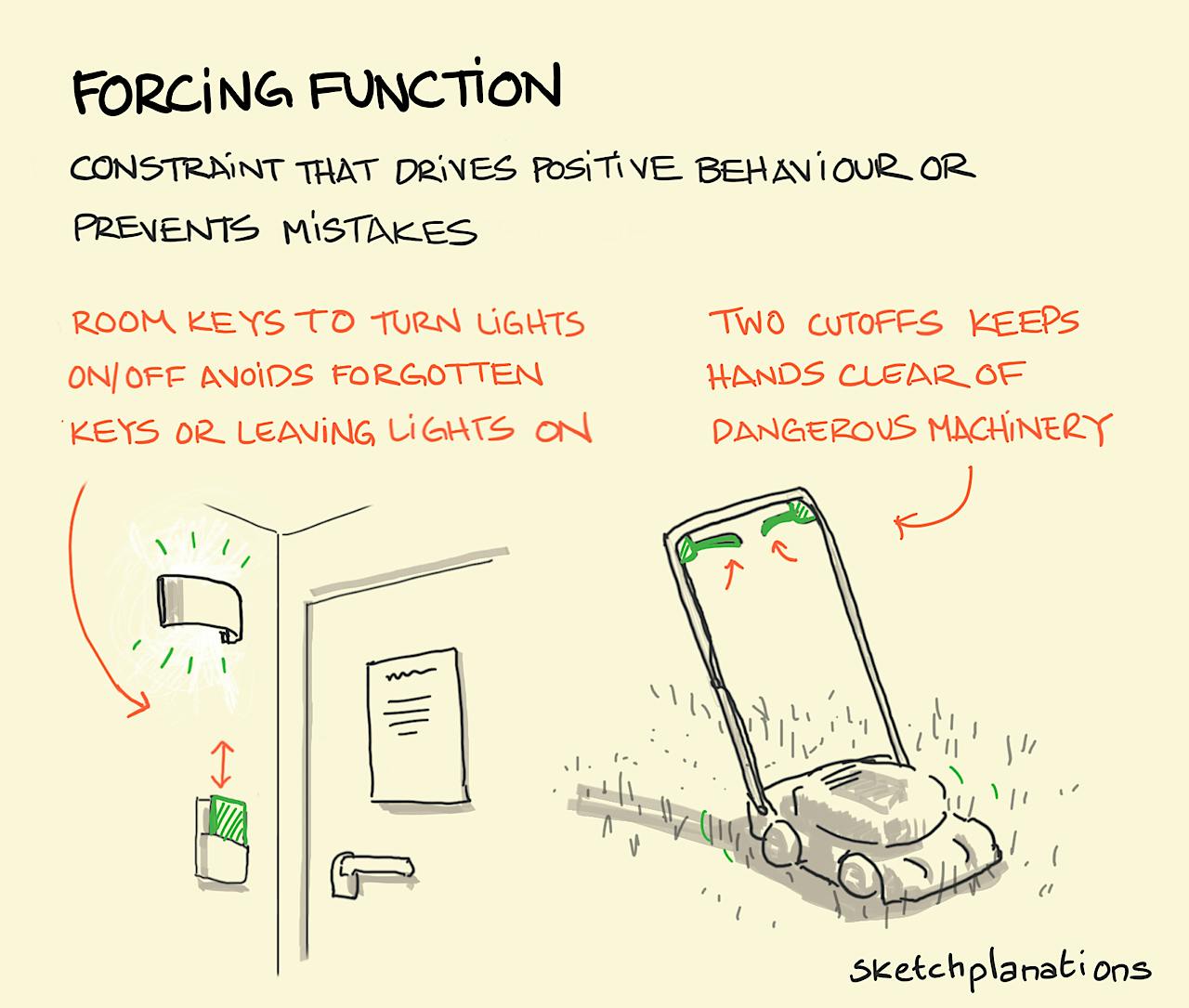Forcing function — design

- Prints
- Copied!
👇 Get new sketches each week
Forcing functions are a super way to help make things foolproof, or better, errorproof — as all of us make mistakes with designed things without being fools. You may have used your own forcing function when, in an attempt to make sure you remember your passport or tickets before a flight, you put them directly in front of the door so you couldn’t open it without noticing them. That little dialogue that asks you if you want to save your changes before closing your work, that’s a forcing function too.
My first memory of understanding a forcing function was when working with a giant machine capable of cutting through 100 pieces of paper at a time. The two buttons to operate it were on opposite sides of the machine. I couldn’t start the machine without spreading my arms out wide. There was then no way to also accidentally have your fingers in with the paper and near the blades when it started. Smart.
I learned this sense of forcing function from Don Norman’s classic The Design of Everyday Things . Also from Don, see Mapping.
The other sense of forcing functions for productivity is also really useful: helping kick ourselves into action.

